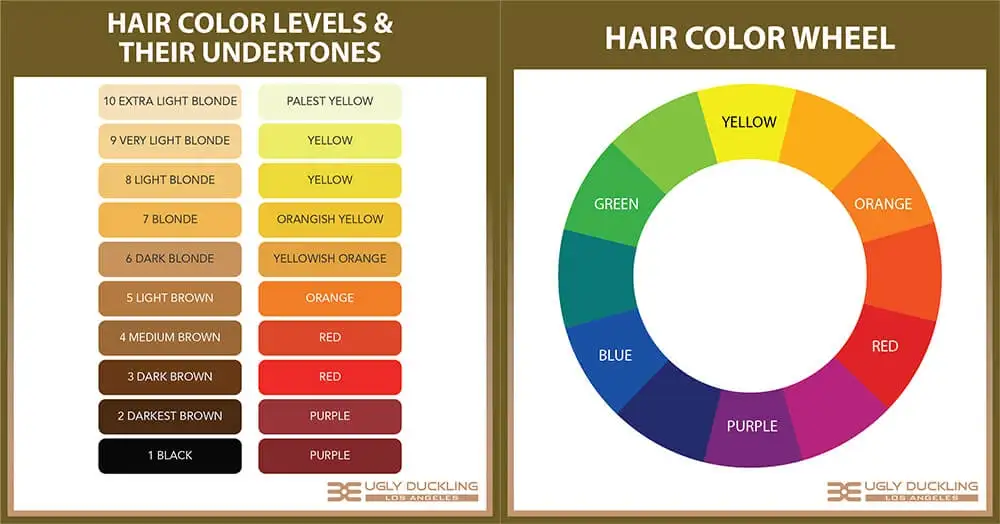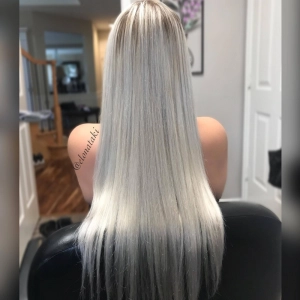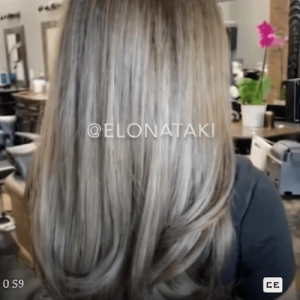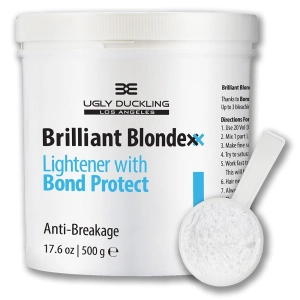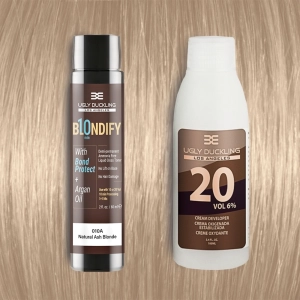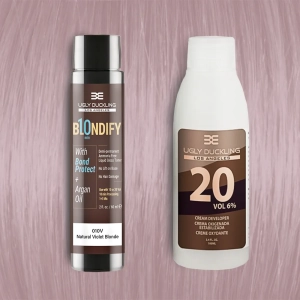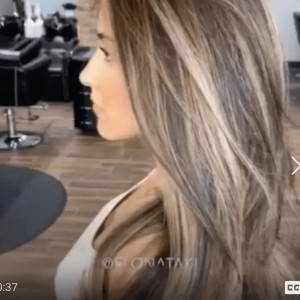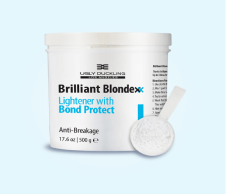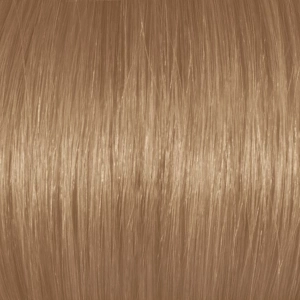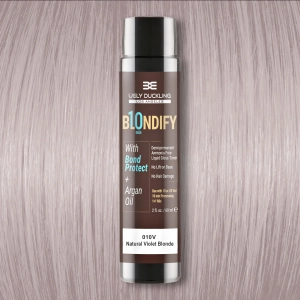Understanding how the Color Wheel really works
Are you facing any color correction issues in your salon?
Hair that is too orange hair or yellow hair after bleaching?
Roots which are still brassy after lifting?
Different colored sections in the hair?
A transition that you want to achieve from warm yellow to cool ash blonde?
If the answer to any of these questions is yes, then you need to understand the color wheel.
In this article, we will teach you.
WATCH VIDEO: HOW THE COLOR WHEEL REALLY WORKS
What exactly is the Color Wheel?
 Hair_Color_wheel (4).png)
The hair color wheel
The color wheel is simply a visual representation of the relationships between different colors.
It is a circle that is divided into sections, each of which contains a different color.
The color wheel was first created by Sir Isaac Newton in the 17th century, and it has been used by artists and designers ever since.
When applied to hair, the color wheel helps stylists understand the relationships between different hair colors.
And how they can be combined to create new shades.
And also to cancel out others.
How Complementary Colors on the Color Wheel Work
The theory of complementary colors states that colors that are opposite to each other on the color wheel will cancel each other out.
Yellow is exactly opposite to purple. So the theory states that you can use purple to cancel out yellow
The opposite of orange is blue. So you use blue to cancel out orange.
The opposite of red is green. So you use green to cancel out red.
That is the theory.
Using the Color Wheel to Re-tone Brassy, Orange, or Yellow Hair
In practice, there are 2 important issues here that we need to be very clear about when you are dealing with brassy, orange or yellow hair.
The first is, are you sure that you have taken the hair to the right level first? If not, bleach first.
The second is, rather than using pure blue, purple, green, use a pre-mixed toner.
We will deal with both of these issues now.
Have you taken the hair to the right level?
The first step in color correcting for brassy, orange, or yellow hair is to understand the underlying level of the hair.
The undertone, or reflect that you are seeing, tells you what level the hair is at.
See the chart below:
 levels_&_undertones (1).png)
Hair Color Levels & Their Undertones
This chart will show you what the underlying hair is of your client.
If you are seeing red after bleaching, her hair is really dark. Level 3 or 4.
If you are seeing orange, or yellowish orange, it is level 5 or 6.
If you are seeing orangeish yellow, it is level 7.
If you are seeing a lot of yellow, it is either level 8 or level 9.
If you are seeing very pale yellow, bordering on white, it is level 10.
Understanding the underlying level is important because it will help you to figure out
Do I want to stay at this level and choose a complementary to neutralize?
Or should I be lifting some more first?
Don't Dump in Color on top of Color - Lift the Hair First
9 times out of 10, hair stylists are too lazy and instead of lifting the hair (because they did not lift it enough), they want to dump in a toner.
Unfortunately, this does not lead to good results.
When you see a lot of red, orange and yellow, our advice would be to reach for a very good quality bleach.
And lift it correctly until you get to level 10.

Brilliant Blondexx Bleach with Bond Protect
.png)
Brilliant Blondexx mixed with 30 Vol developer will lift even dark hair to pale white level 10.
.png)
This is what the hair should look like after you have bleached it. Hair by Ashley Betancourt.
Using the Color Wheel to Neutralize Orange Tones
Let's say you have done the above and truly the hair is bleached as far as you can bleach it.
But it's still too orange. What should you do?
As the Color Wheel suggests, you need to use blue.
But we would not suggest you use regular blue. The resulting color will be too difficult to control.
Instead, use Ugly Duckling's pre-mixed blue based ash blonde colors.
Colors such as 10.1b, 9.1b, 8.1b, 7.1b and 6.1b.
Your exact choice will depend on the target level of course.
To get to a true white blonde hair color, for example, use 9.1b or 10.1b.
As we used on our model below:
.png)
Extra Cold Ash Blonde 10.1b. Hair by Brittney.
For hair that is too dark to take to a true level 10 blonde, you can use 7.1b, neutralize the orange and produce a result as you see below:

Cold Ash Blonde 7.1b. Hair by KandK Hair Salon
Using the Color Wheel to Neutralize Yellow Tones
If you are seeing a lot of yellow, then you need to use purple or violet, which is the same thing).
But once again, we don't advise you to use pure purple.
Instead, use one of Ugly Duckling's purple based toners.
They are pre-mixed and will give you consistent color neutralization without any bizarre side effects.
The model below, for example, has had Ugly Duckling Intense Pearl Blonde 100V (purple based high lift toner) applied.
.jpg)
Intense Pearl Blonde 100V. Hair by Codey Darnell.
What if you are aiming for a more natural blonde look and you still want to neutralize yellow?
Then use Ugly Duckling's Blondify toner, Natural Violet Blonde 0101V. It is also purple based, but it is non lifting.
It is also ammonia free and works in just 10 minutes, so it is incredibly easy and effective to use.
.png)
Yellow Hair neutralized with Blondify 010V. Hair by Elona Taki.

